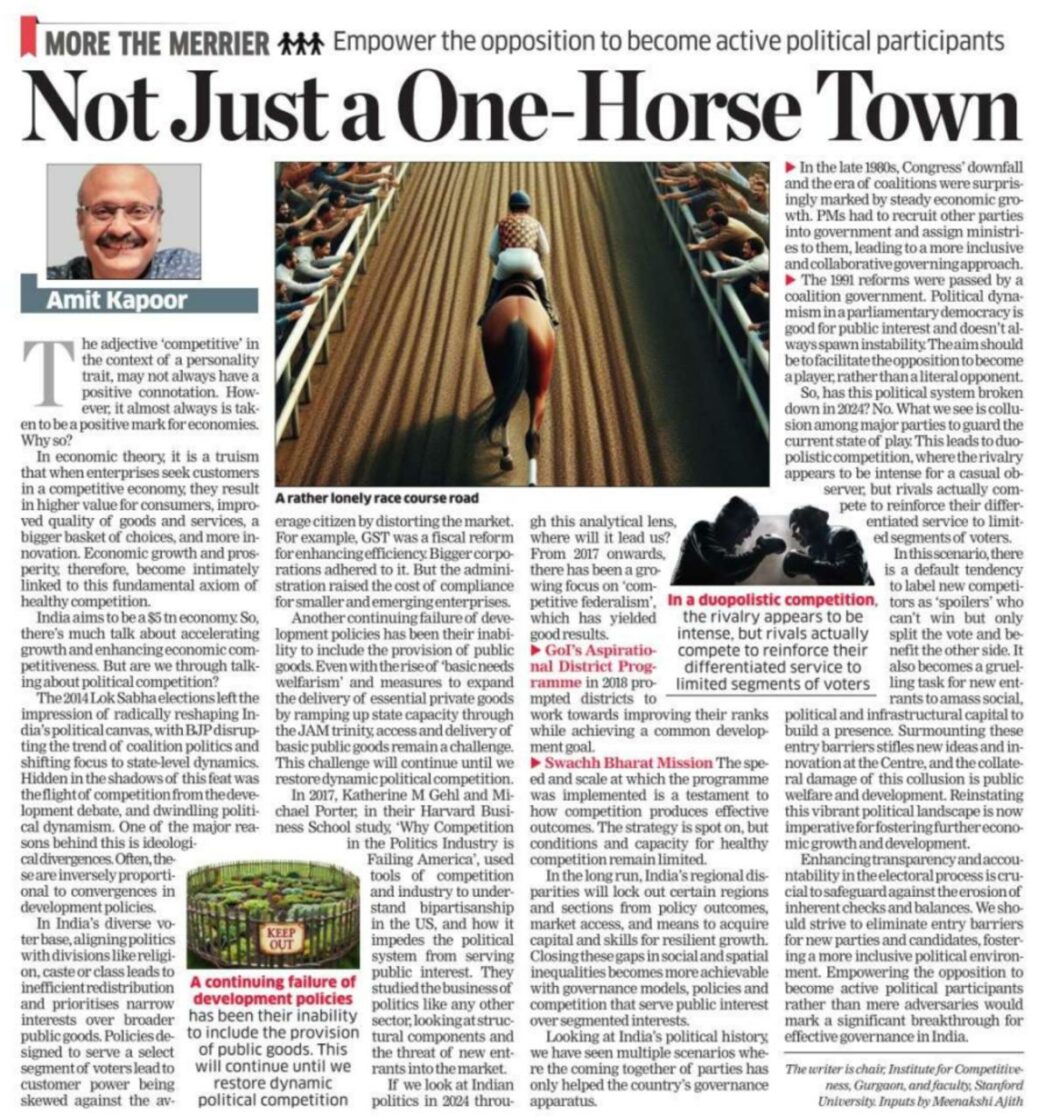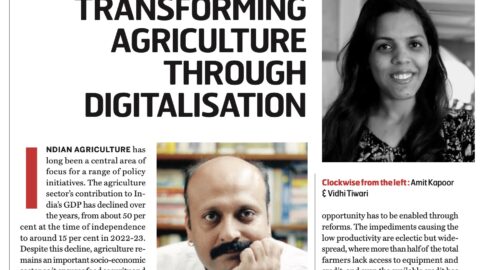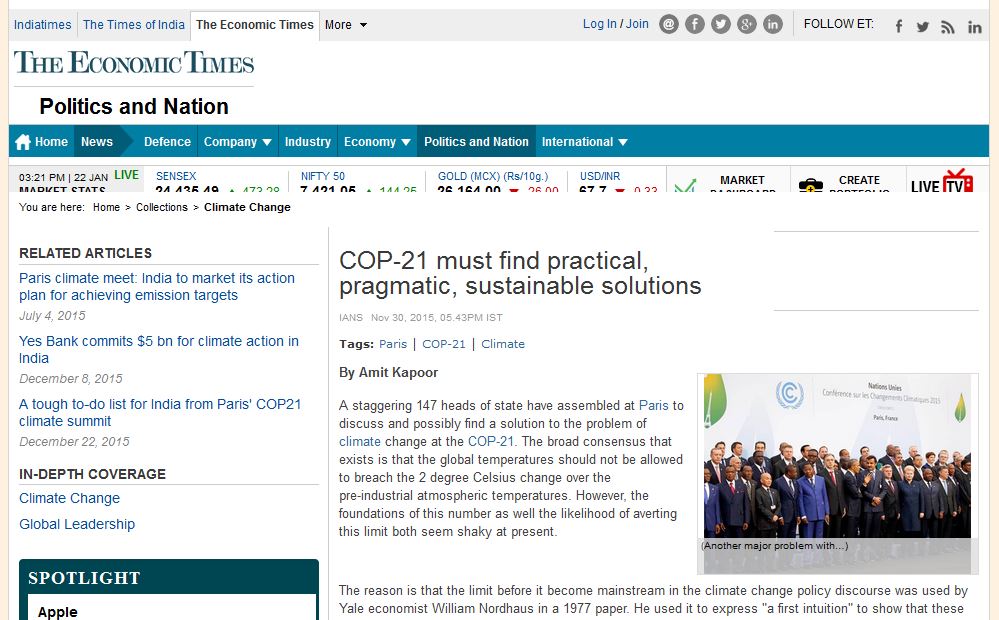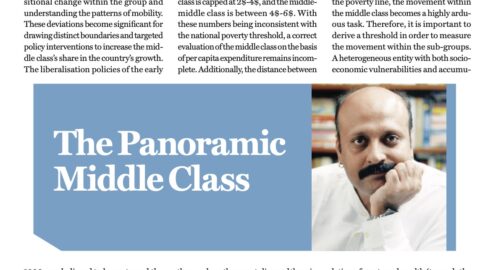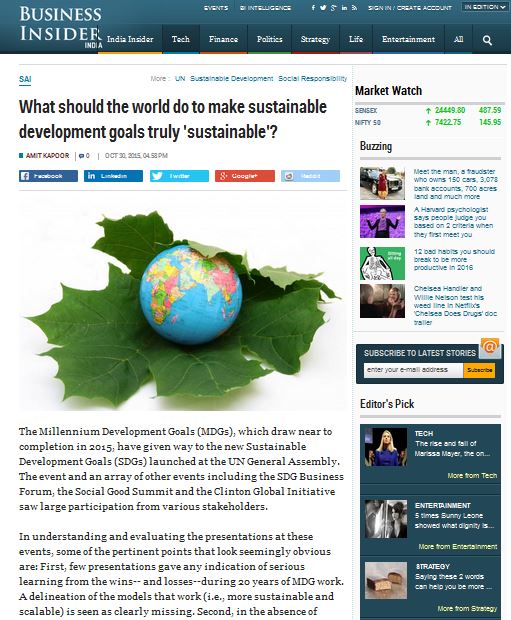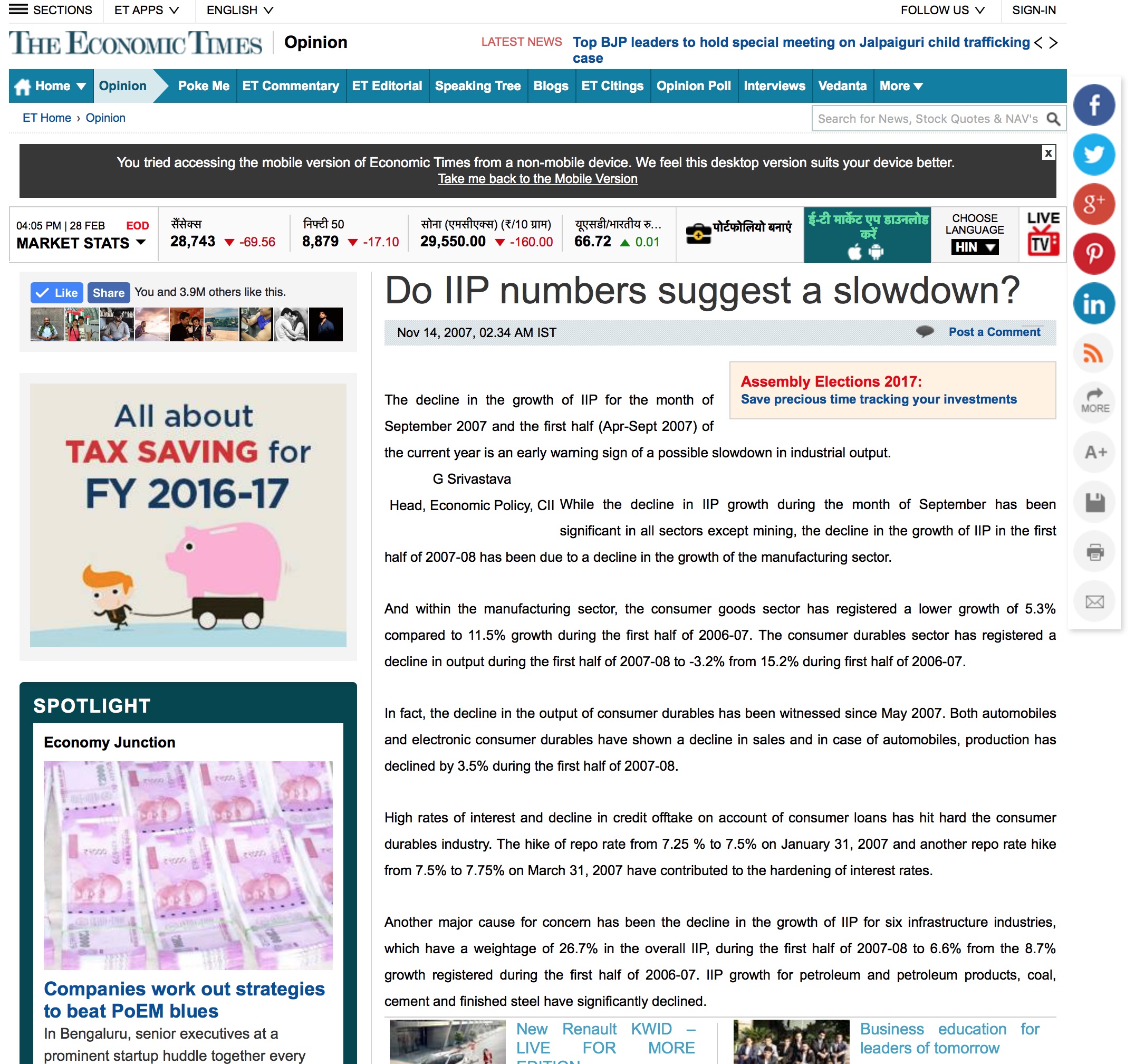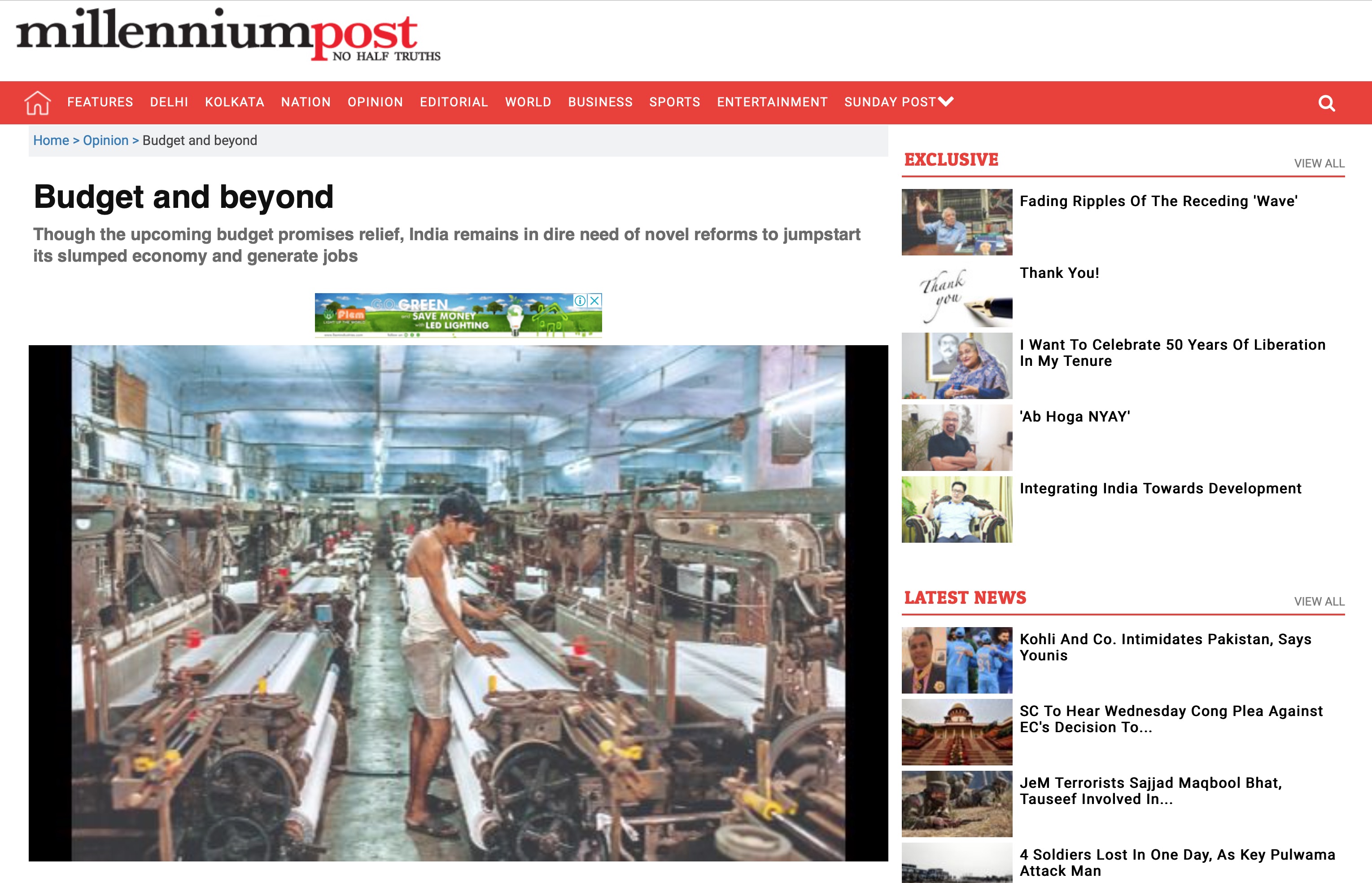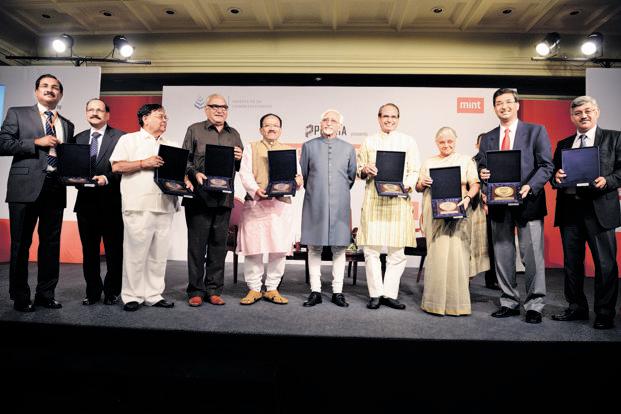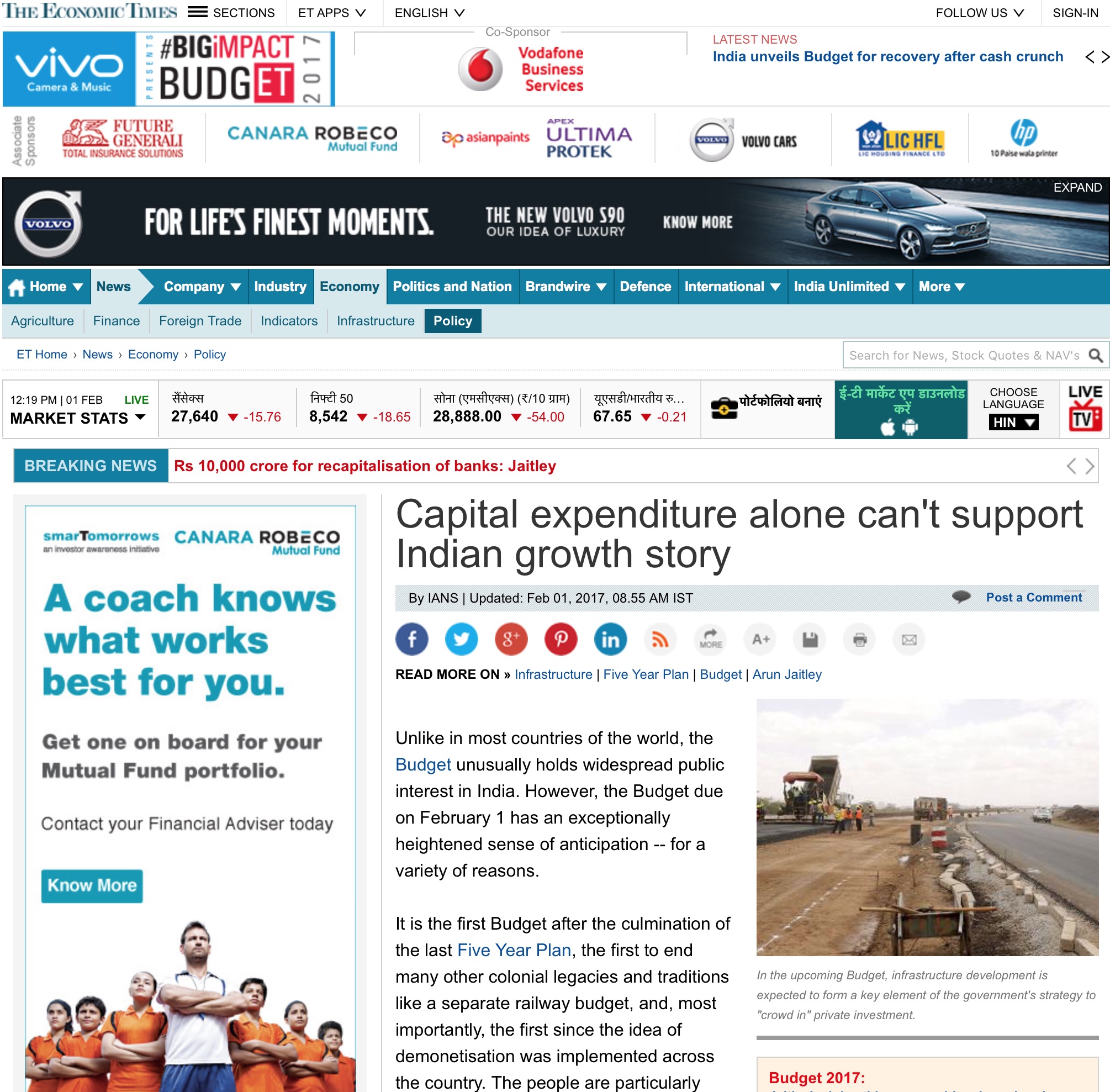By Amit Kapoor & Inputs by Meenakshi Ajith
The adjective ‘competitive’ in the context of someone’s personality trait, may not always have a positive connotation. However, it almost always is taken to be a positive mark for economies. Why so? In economic theory, it is a commonly accepted truism that when enterprises seek customers in a competitive economy, it results in higher value for consumers, improved quality of goods and services, bigger basket of choices, and more innovation. Economic growth and prosperity therefore become intimately linked to this fundamental axiom of healthy competition. As India stands at the helm of 2024 electoral polls with the pious intent of becoming a five trillion-dollar economy, there is much talk about accelerating growth and enhancing economic competitiveness. However, are we through talking about political competition? The 2014 Lok Sabha elections left the impression of a radically altered political canvas in the country. The winning party was credited for puncturing one of the most important trends in Indian Politics since the ‘era of coalitions’ and the resultant emergence of states as the effective arena of political choice. Hidden in the shadows of this extraordinary feat was the fleeing of competition from the development debate and dwindling political dynamism.
One of the major reasons behind the dwindling of political dynamism in the country is ideological divergences. More often than not these ideological divergences are inversely proportional to convergences in development policies. Amid claims of growing social and political cleavages in the country, we are also puzzled by the evergreening of the same public welfare schemes under different names. In India, with its vast and segmented voter base, knitting politics with cleavages- be it religion, caste or class only creates pressure to redistribute in inefficient ways. It also shifts the focus of policies from broader public goods to exclusive club goods that serve special interests. For instance, it is a myth that glorified subsidies in select sectors will permanently transform manufacturing in India. Rather we need simpler taxes, and easy trade environments. Similarly raising the import tariffs to protect domestic companies increases the cost not just for consumers but also for manufacturers in the country. This in turn impedes their entry into the global trade market. Policies designed to serve a selected segment of voters lead to the customer power being skewed against the average citizen by distorting the market. For example, the Goods and services tax was a significant fiscal reform for enhancing efficiency. The bigger corporations adhered to the new regime with ease, but it raised the cost of compliance for smaller and emerging enterprises. Another continuing failure of development policies in the country has been its inability to include the provision of public goods. Even with the rise of ‘basic needs welfarism’ and measures to expand the delivery of certain essential private goods by ramping up state capacity through the JAM trinity, access and delivery of basic public goods remain a challenge. The challenge will continue until we restore the conditions for a dynamic political competition.
For a second, let us revisit the basic axiom of economic competition mentioned in the beginning. If we look closer, political systems are much like any business or industry. A few years ago, Professors Michael Porter and Katherine Gehl from Harvard Business School eloquently used the tools of competition and industry to understand bipartisanship in the United States and how it impedes the political system from serving public interest. They studied the business of politicslike any other sector, looking at structural components such as competitors, customers, channels to reach customers, suppliers, and the threat of new entrants into the market using the “five-forces framework. Unlike other industries which are subject to legal or institutional oversight, there is no higher authority lording over political systems, and this makes it a self-regulating business. If we look at Indian politics in 2024 from this analytical lens, where will it lead us to?
From 2017 onwards, there is a growing focus on “competitive federalism” and it has yielded some outstanding results. The Centre’s Aspirational district program in 2018 forged a new path by stimulating competition at all levels of governance through a ranking system. It prompted districts to work towards improving their ranks while achieving the common goal of development. The speed and scale at which the Swachh Bharat Mission was implemented across the country is also a testament to how competition produces effective outcomes. The strategy is spot on but the conditions or even capacity for a healthy competition in India remain limited. In the long run, India’s wide regional disparities will lock out certain regions and sections from policy outcomes, market access and the means to acquire capital and skills for resilient growth. Closing these gaps in social and spatial inequalities becomes more achievable with governance models, policies and competition that serves public interest over segmented interests.
Looking at our nation’s political history, we have seen multiple scenarios where the coming together of parties has only helped the country’s governance apparatus. In the late 1980’s the downfall of congress and the era of coalitions was surprisingly marked by steady economic growth in the country. Prime ministers had to recruit other parties into the government and assign crucial ministries to their leaders. This developed a more inclusive and collaborative governing approach that befitted the country’s size and diversity. In fact, the reforms of 1991 which took some important steps to support India’s development trajectory, were passed by a coalition government. The teachable moment from this infamous ‘coalition era’ is that in a parliamentary democracy, we elect the parliament and not the prime minister. Political dynamism in a parliamentary democracy is good for public interest and does not always spawn instability. The aim should be to facilitate the opposition to become a player in the political landscape rather than a literal opponent.
The question then arises – Did the political system break down in 2024? The answer would be no. What we see instead is a collusion among major parties to guard the current state of play. It leads to a duopolistic competition where the rivalry appears to be intense for a casual observer, but rivals compete to reinforce their differentiated service to limited segments of voters. In this scenario there is a default tendency to label new competitors as spoilers who cannot win but only split the vote and benefit the other side. It also becomes a grueling task for new entrants to amass the social, political, and infrastructural capital to build a nation-wide presence. Surmounting these entry barriers stifles new ideas and innovation at the center and the collateral damage of this collusion is public welfare and development.
India boasts an exceptional track record of democratizing its institutions long before achieving significant economic development. Reinstating this vibrant political landscape is now imperative for fostering further economic growth and development. It’s crucial to enhance transparency and accountability in the electoral process to safeguard against the erosion of inherent checks and balances. As voters, let’s remain committed to understanding the tangible impact of policies and their outcomes on the ground. We should strive to eliminate entry barriers for new parties and candidates, fostering a more inclusive political environment. Empowering the opposition to become active participants in the political arena, rather than mere adversaries, would mark a significant breakthrough for effective governance in our country.
The article was published with Economic Times (Print) on May 16, 2024.

